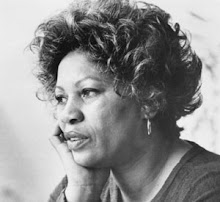Morrison's presentation of genealogies changed in their use in other novels. In "Sula," it was still used to distinguish families of the Bottom. However, instead of keeping them territorial to just families, she allowed intersections to be made between characters; specifically melting the characters of Sula and Nel into one. In "Beloved," again they were used differently. Instead of distinguishing and separating, genealogies were used to unify families (and individuals) to one another due to their common history regarding slavery. In "Jazz," all the characters from the past and present were somehow connected through the use of genealogies. And in her latest novel "A Mercy," genealogies are unavailable or so broken up that characters are forced to create and establish their own familial ties.
Using these examples, one could argue they parallel Morrison's philosophy regarding families during the publication time of each novel. At first, viewing the family as a concrete entity, differing from the others and identifying itself through these differences. Then, she establishes interfamilial connections through individuals or through the family as a whole. It is in this setting that a community can become united by shared experiences or common histories. And finally, Morrison reaches the understanding that the concept of a "family" is not so concrete and/or limited. Creating, in "A Mercy," her most untraditional family comprised of four women of no relation, living together on the Vaark's property.

No comments:
Post a Comment